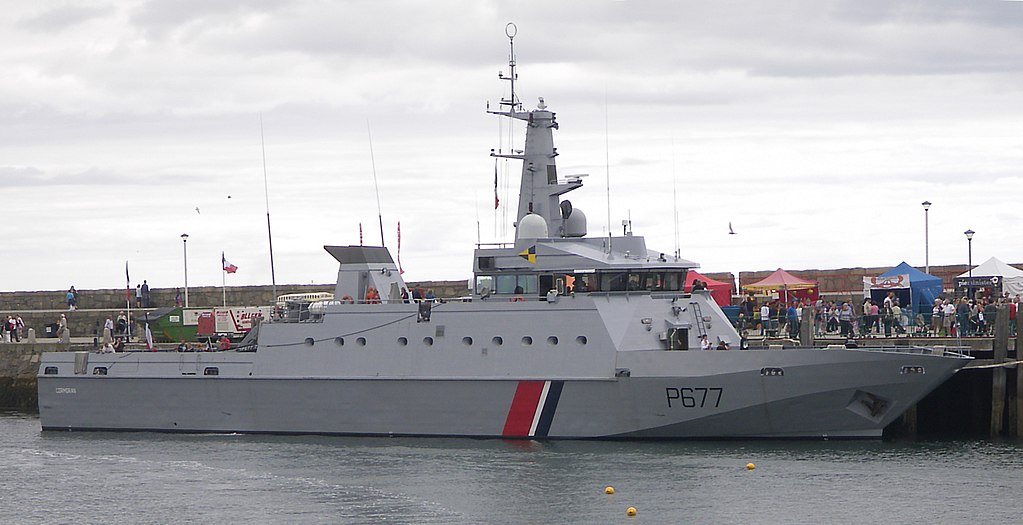The Seizure of a Russian Merchant Vessel Raises Questions About High Seas Freedoms
Is the recent sanctions-based seizure of a Russian cargo ship beyond French waters consistent with the high seas freedoms and exclusive flag state jurisdiction reflected in the law of the sea?

Published by The Lawfare Institute
in Cooperation With

This post is the second of two articles that analyze the seizure of Baltic Leader, a Russian merchant ship intercepted by the French Navy on Feb. 25. The 127-meter ship was transporting cars in the English Channel when it was diverted to the Port of Boulogne-sur-Mer in northern France. In the first article, I explored the vessel detention through the lens of the law of neutrality, suggesting it may have not met the abstention and impartiality obligations expected in an international armed conflict. This article turns from the law of neutrality to the law of the sea, addressing how the sanctions-based arrest relates to freedom of navigation and exclusive flag state jurisdiction on the high seas. You can read the first article here.
The Sanctions-Based Seizure
The previous post drew facts primarily from news reports. This article complements those reports by further exploring the basic details of the seizure with more technical data from the automatic information system (AIS). As illustrated below, understanding the underway movements of the vessels involved is essential to the legal analysis. All times are written in Coordinated Universal Time (UTC).
As mentioned in my previous post, Baltic Leader is a Russian-flagged roll-on/roll-off (ro-ro) cargo ship. At about 9:45 a.m. on Feb. 25, it departed Rouen Port, around 60 nautical miles up the River Seine in Normandy. The car carrier traveled down river to the Bay of the River Seine and then turned north into the English Channel. It left French waters at about 4:45 p.m. AIS data suggest French naval vessels did not interact with Baltic Leader in its seven-hour transit from Rouen to beyond France’s territorial seas.
After leaving French waters, the ro-ro maintained a northerly course for around three hours until traveling northeast into the Dover Strait Traffic Separation Scheme (TSS). While in the TSS, Baltic Leader was intercepted by three French Gendarmerie law enforcement vessels. Coming from points ahead of Baltic Leader’s track, the 20-meter Scarpe, 44-meter Fourmentin and 54-meter Cormoran surrounded the ship about 11:00 p.m. at a point (50° 33' 20.7" N, 001° 00' 48.6" E) about 25 nautical miles from France’s coast. With Cormoran to port, Fourmentin to starboard, and Scarpe off the bow, the vessel was brought into French waters, eventually mooring in Port Boulogne-sur-Mer at around 2:00 a.m. the following day. Baltic Leader remains in Boulogne today over Russia’s objections.
France effected this seizure pursuant to European Union (EU) sanctions against the Russian Federation due to Russia’s invasion of Ukraine. Sanctions have been used increasingly to exert greater influence over this international crisis. As sanctions enforcement progresses, especially at sea, it seems prudent to remind ourselves that enforcement of sanctions, absent a U.N. Security Council resolution, remains confined by existing obligations under international law. As with abstention and impartiality under the law of neutrality, explored in my previous post, unilateral sanctions, whether by a single state or a group of states, must be consistent with freedom of the high seas and exclusive flag state jurisdiction embodied in the law of the sea.
Freedom of the High Seas
Freedom of navigation on the high seas is a principal feature of customary law and reflected in the U.N. Convention on the Law of the Sea (UNCLOS). France and the EU are parties to the treaty, which reflects customary international law. The law of the sea recognizes the fundamental right on the high seas for all states to freely sail ships flying their flags (Articles 87 and 90). As high seas freedoms apply in the exclusive economic zone (Articles 58 and 86), enjoyment of this freedom generally commences 12 nautical miles from a coastal state’s baseline. The essential underpinning of high seas freedoms is the principle of exclusive flag state jurisdiction, which stipulates that a vessel on the high seas is subject to the jurisdiction of only its flag state—the nation whose flag the vessel flies (Articles 91 and 92).
When outside territorial seas, generally, a state may not board or seize another state’s vessels. Exceptions to this principal rule exist. For example, the U.N. Security Council may always authorize interdictions under Chapter VII of the U.N. Charter, as it has in the past, such as during the 1993 crisis in Bosnia. States may also interdict ships outside territorial seas with consent or prior agreement from the flag state. UNCLOS further recognizes a right to interdict stateless vessels or those engaged in piracy, slavery or unauthorized broadcasting, as described in Article 110. The treaty also reflects a right to detain and board ships as a condition of port entry (Article 25) or after lawful hot pursuit (Article 111). Finally, as laid out in Articles 33 and 73, states may interdict foreign vessels in the contiguous zone when they are suspected of violating a coastal state’s customs, fiscal, immigration or sanitary laws and in the exclusive economic zone to enforce living resource laws.
Conclusion
AIS data indicate that France’s law enforcement vessels surrounded Baltic Leader about 25 nautical miles from the French coast, well outside the territorial seas and many hours after it left port. None of the legal bases to support a high seas interdiction seems apparent from the currently available public information. This is not a case of statelessness, piracy, slavery, unauthorized broadcasting, port entry nor hot pursuit. The scenario does not involve coastal state jurisdiction over living resources in the exclusive economic zone or enforcement competencies in the contiguous zone. Russia’s objections suggest that treaties, bilateral agreements and consent are not in play. Moreover, unlike the seizure of M/V Wise Honest in 2018, in the present situation, the U.N. Security Council has not passed Chapter VII resolutions authorizing the enforcement of sanctions without flag state consent.
France may yet provide additional information on the detention of Baltic Leader. France may assert, despite the AIS data, the actual seizure took place after the ro-ro entered French waters. Alternatively, France might suggest the EU sanctions have been codified in French customs, fiscal, immigration, or sanitary laws and that the seizure took place within its 24 nautical mile contiguous zone to prevent infringement of such laws. In time, these or other theories may be presented and analyzed. For now, the vital point is that some legal basis for infringing on Russia’s high seas freedoms and exclusive flag state jurisdiction, independent of the EU sanctions, is required. Non-U.N. sanctions regimes, no matter how worthy or expedient their causes, should not outpace international law, whether it be the law of neutrality or the law of the sea.





